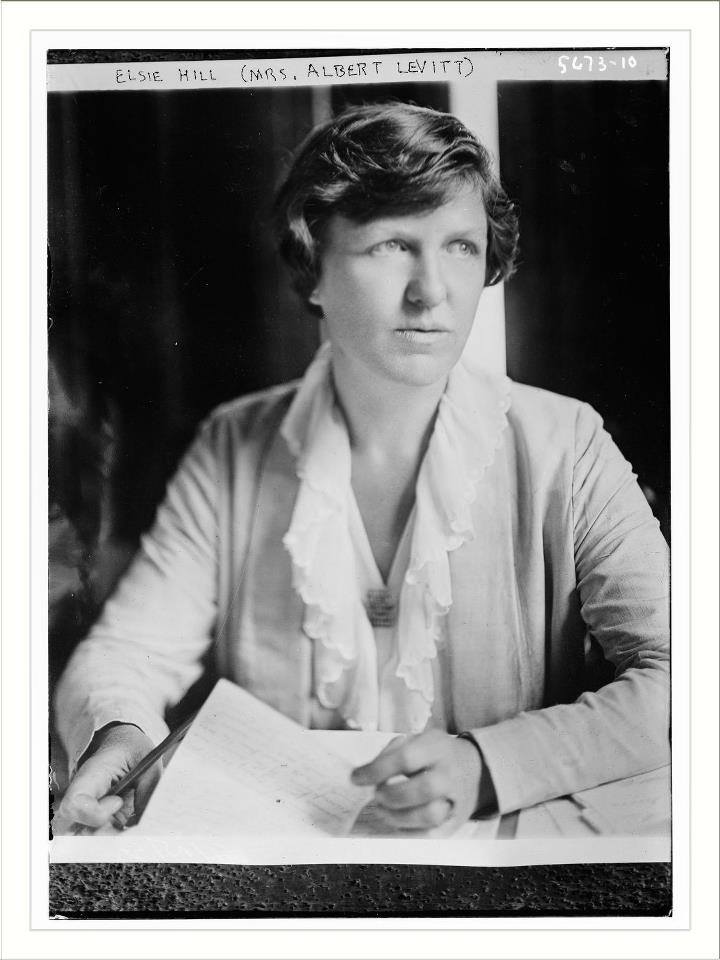April 6, 1921: There is great optimism being expressed today at National Woman’s Party headquarters that the rest of the fight for women’s equality may be much shorter than the multi-generational struggle to end sex discrimination in regard to voting rights.

The fight ended on August 26th of last year.
Led by Elsie Hill, sixty members of the N.W.P. met with President Harding today at the White House and came away feeling confident that the new Chief Executive was on their side, and that the Republican Party would continue its longstanding leadership role in regard to women’s rights.
This tradition goes back so far that when Susan B. Anthony voted “illegally” in the 1872 election, she wrote to Elizabeth Cady Stanton that night: “Well, I have been & gone & done it!—positively voted the Republican ticket—strait —this a.m. at 7 O’clock …”
The Susan B. Anthony (now the 19th) Amendment itself was first introduced into Congress by Senator A.A. Sargent, Republican of California, in 1878. The first woman in Congress was Representative Jeannette Rankin, Republican of Montana, elected for one term in November, 1916. There is presently one woman in Congress, Representative Alice Mae Robertson, Republican of Oklahoma.
The Woman’s Party’s principal goal at the moment is the Equal Rights Bill, which would eliminate all forms of sex discrimination in the Federal Government and equalize all Federal laws.
Senator Charles Curtis, Republican of Kansas, has agreed to introduce and lobby for it. Hill described today’s meeting with the President:
“We believe, after hearing the President’s response, that he is at one with us on this matter. He assured us that every promise made to women during the campaign was meant sincerely and that one of the matters occupying his attention is the bringing of women into the business of Government. We received assurance that the legislation which the Woman’s Party asks will be brought to the attention of the proper authorities in Congress and that the President desires, as do the women of the country, the fulfillment of the 19th Amendment. There is no reason, therefore, why speedy action should not follow.”
It was just two months ago that the National Woman’s Party held its first convention since last year’s successful ratification of the Susan B. Anthony Amendment.
Though this accomplishment fulfilled the party’s original purpose, the delegates were overwhelmingly and enthusiastically in favor of keeping the party intact and are ready to work just as hard for the goal of “absolute equality” for women in all areas of life as they did for a Constitutional guarantee of suffrage.
The Equal Rights Bill will be an important first step in that process, though there is talk of a 20th Amendment, which would be a logical companion to the 19th, which would put equal rights for women in the Constitution itself.
The fact that Republicans control the White House as well as both Senate and House also bodes well for rapid progress for women.
It was only when Republicans got control of Congress in 1919, following the midterm elections of November 5, 1918, that the Anthony Amendment was finally passed, over the vehement and long-standing objections of segregationist Southern Democrats because it’s race-neutral and enforceable by Congress, and not the individual States.
When the House passed the Anthony Amendment by the required 2/3 supermajority on May 21, 1919, the vote was 102 Democrats in favor and 70 opposed (59.3% support), with 200 Republicans in favor and 19 opposed (91.3% support).
In the Senate, on June 4, 1919, it was 20 Democrats in favor and 17 opposed (54% support), with 36 Republicans in favor and 8 against (81.8% support) that provided the 2/3 required here as well.
Once sent to the States for ratification, 26 of the 36 State legislatures (72.2%) that ratified were entirely controlled by Republicans, 7 by Democrats (19.4%) and 3 (8.3%) had one party in control of the Senate, the other controlling the House.
Eight of the nine State legislatures (88.9%) that rejected the Anthony Amendment were Democratic. Three State legislatures never voted on it.
Of course, it was a Democratic Governor who called a Democratic Legislature into session in Tennessee which provided the all-important 36th and final ratification needed, while Republican governors in Vermont and Connecticut refused to take similar actions.
But it should also be noted that it was only strong Republican support in the Tennessee House that overcame a slight majority of Democrats who voted “no,” and it was a young Republican named Harry Burn who provided the tie-breaking vote needed for Tennessee to ratify.
This is truly an exciting time to be a feminist. The battle for the vote stirred millions into action, and though some have retired from the battlefield after having politically empowered tens of millions of women, many others are combining the skills they learned during the suffrage struggle with their newly won power at the ballot box to finish the fight for equality begun so long ago.
The League of Women Voters was launched by the National American Woman Suffrage Association even before the 19th Amendment battle was won, and it is already a well-established national organization. Other groups, such as the National Federation of Business and Professional Women’s Clubs, established two years ago, and the National Council of Jewish Women, founded in 1893, continue their good work.
The National Woman’s Party has now committed itself to the same kind of uncompromising demand for equality and vigorous action in pursuit of that goal which marked its role in the struggle for the vote. So it should not be long before the last vestiges of discrimination based on sex are swept away and the injustices, indignities and waste of so many women’s talents which have gone on for so many centuries become unimaginable to future generations.





